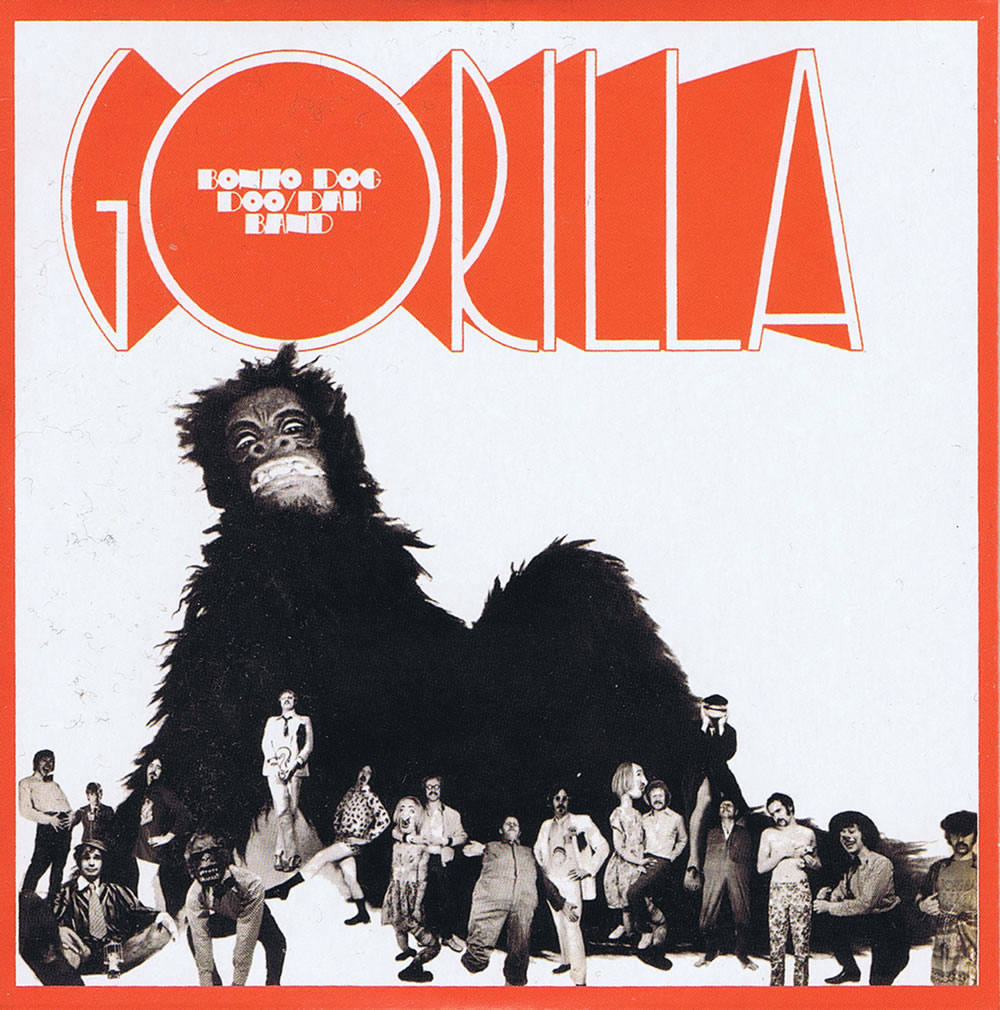Released mere months after Sergeant Pepper’s Lonely Hearts Club Band shook the popular music scene to its core, The Bonzo Dog Doo Dah Band’s Gorilla turned the whole pop culture thing on its head. 1967 saw music at something of a counter culture cross roads. While ‘the kids’ had spent recent years embracing The Beatles, beat groups, the Brit-Blues movement, folk-pop and primitive psychedelia, the radio-waves were still dominated by jazz, cosy MOR and what can only charitably be referred to as easy listening, ostensibly the music of ‘the kids’ parents. Even before Sgt Pepper The Beatles had been making a number of nods to music hall, but it took the Bonzos to lampoon the trad-jazz nostalgia nonsense in a way that made sense to ‘the kids’.
From the opening skronks of “Cool Britannia”, a phrase hijacked for horrific purposes in the mid-90s, Gorilla is an album that exists partly in its own sealed off universe, as it paints dioramas of musical grotesques, while simultaneously having it’s finger on the cultural pulse in a way that no other album of the era managed to, simply by acknowledging that pop music was not the only kind of music out there. Sometimes the individual songs on Gorilla are so absolutely on the nose that they can actually come across as at best misjudged, and at worst mean-spirited and of questionable taste (though the worst offender, “Look Out, There’s a Monster Coming”, does at least poke fun at the obsession with external image and needless cosmetic surgery that has become ridiculously commonplace in the fifty years since the song was featured on Gorilla). Equally there are tracks where things land in elegant fashion, such as “Jazz (Delicious Hot!, Disgusting Cold)”, “The Equestrian Statue” and “Music for the Head Ballet”, however they have become a little less celebrated than other numbers on Gorilla. “Death Cab for Cutie” is a number that some will recognise, as it was memorably performed on the Magical Mystery Tour film, and provided a name to a bunch of American rockers. Elsewhere, “Jollity Farm” and “Mickey’s Son and Daughter” were covers, which although approached with musical gusto, were tonally at odds with much of what was going on.
Gorilla, although an oddly daring release, is a flawed one. Even the track sequencing is a bit off, especially when you consider that the album’s obvious opener “The Intro and the Outro”, opens the second side, and “Cool Britannia” would have served as the second side opener far better. Some of the humour has dated badly as well, though given the album’s skewed look at generational attitudes, that could also be seen as something that is quite fitting. The aforementioned “The Intro and the Outro” is a particularly clever track, taking advantage of studio trickery while using the most basic of recording equipment to create one of the most iconic Bonzos numbers. Aside from that, my two favourite numbers on Gorilla are the closing tracks on each side. While “The Sound of Music” tears huge lumps out of the type of mass-market musicals that were all the rage through the 60s and closes the album in a suitably anarchic mood, it is “Narcissus” which has always delighted me, with Vivian Stanshall chatting nonchalantly to co-band leader Neil Innes about how the album is going so far. As mid-point tracks go, it’s a stroke of genius, and should be included as the last track on side one of every mix tape you ever compile.
Gorilla is not an album which has withstood the vagaries of fashion or the passage of time. Then again, with the way it uniquely assessed the dichotomy of what young people were listening to at the time, and the majority of what the wireless was actually playing, it perhaps doesn’t need to. It is an album which exists as a reminder that regardless what pop historians want you to think, it took a long time for rock and roll music to permeate the airwaves in the way that we imagine. Yes it’s a period piece. Yes, The Bonzos would go on to release superior albums, but none captured the state of the nation so accurately as did Gorilla. It is also unique for being just about the only album ever released to be dedicated to “Kong, who must have been a great bloke”.













No Comment